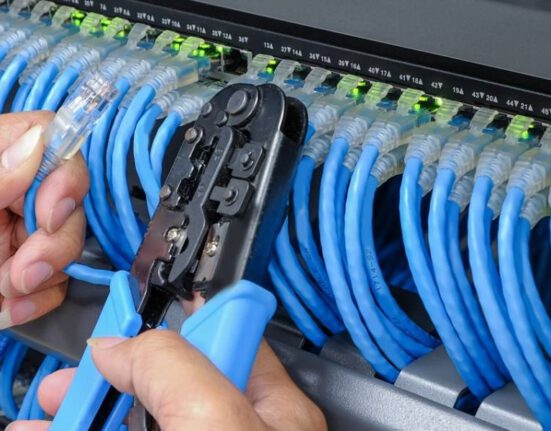When choosing an Ethernet cable, you must first understand what each one is and how they differ. Listed below are the differences between the most common types of Ethernet cables: Cat5, Cat6 and the latest Cat8. You can also read up on what makes each type better than the next. There is one thing that’s common across all of them: they support varying speeds and can be used in various environments. For example, the best Ethernet cables for home use will support a speed of ten gigabits.
Cat5e
The main difference between Cat5 and Cat5e Ethernet cables is that the former supports speeds of up to 100 megabits per second, while the latter is backward-compatible and supports Gigabit Ethernet. Both are available in shielded and unshielded versions, which reduce noise, but Cat5e is the more popular choice due to its price and backward compatibility. As such, Cat5e cables are gaining ground as the preferred choice of many business and home networks.
Cat6
A cat6 Ethernet cable is commonly used in network applications. It is specifically designed for Gigabit Ethernet applications, and performs well for high-speed data transfers. This type of cable is also compatible with ATM devices and other gigabit-speed products. Here are a few ways to test your Cat6 cable. Read on to find out more! Also, be sure to check the ANSI/TIA-568-C.1 standard to learn more about its performance.
Cat7
Compared to other types of cables, Cat7 offers high-performance data transfer rates of up to 10 Gbps. It also supports a bandwidth of 600 MHz. This cable is great for use in data-sharing intensive local server networks. It is constructed with four twisted copper pairs (26AWG) wrapped in an Aluminum foil with a 70 percent aluminum braid shield. Its high-quality construction eliminates crosstalk and other performance issues. Moreover, the cable’s corrosion resistance and long-lasting performance is one of its key features.
Cat8
A CAT8 Ethernet cable is a type of network cable that has increased speed and reliability. Its frequency is up to 2 GHz, but is limited to a two-connector channel of thirty meters. This type of cable is shielded and is capable of speeds of up to 40 Gbps. It is backward compatible with Cat-7 and lower categories. The following are some advantages of this cable type:
Cat10
Ethernet cables come in several categories and types. In local area networks, they are typically used. They use the RJ45 patch connector to link multiple Ethernet-based devices together. The differences between these cables are often insignificant to the casual observer. Here are some tips to choose the right cable for your specific needs:
Cat11
Cat6 and Cat11 Ethernet cables are similar in appearance and function but have slightly different capabilities. Basically, both are used for high-speed networking. However, Cat6 offers higher bandwidth support – up to 10Gbps – and better build quality. They also have thicker copper conductors and tightly wound wires. Additionally, they come with braided or foil shielding to prevent signal interference. While the colors of Ethernet cables don’t necessarily represent their performance characteristics, vendors may assign specific color codes to different types of cable for identification purposes.
Cat12
There are many different types of Cat12 Ethernet cable. It is recommended for use in residential settings. Unlike Cat5a and other types of cables, Cat12 has a maximum speed of 10 Gbps. Moreover, these cables can reach a distance of up to 100 meters. The difference between these cables and Cat5a cables lies in their speeds and specifications. The following are a few benefits of choosing the right cable. They provide good performance and speed.
Cat15
The most important thing to remember when installing an Ethernet network cable is its size. A Cat15 cable should be at least six feet in length. Smaller cables, such as Cat5e, are usually not enough to connect two computers. A larger cable will have to be protected against damage or exposure from the elements. Cat6a cables have the same size, but they are much thicker and require a larger patch panel or tray. But the good news is that they will last a long time.
Cat16
While there are several different types of Ethernet cables, TIA/EIA and other standards organizations have only recognized the Cat-16 cable. Nevertheless, it is still a widely used cable, especially for 10Mbps Ethernet networks. Its name is derived from TIA/EIA-568-B, which defines it as an ISO/IEC 11801 Class F cable with four pairs of shielded copper wires inside a single overall shield. Cat-8, on the other hand, is an even more powerful cable that provides a substantial data rate increase over Cat-6 cables. While the Cat-8 cable is much more expensive, its performance is significantly higher than its predecessors.
Cat19
While there are many advantages to using Cat19 Ethernet cable for your home or business network, be sure to look at the “cat” number as well. While you may think that a higher “cat” number means better performance, it actually hinders your network’s performance. If you don’t need the high speed, you can also use a lower-priced Cat10 or Cat6 cable. Here are a few of these cables’ main advantages.










Leave feedback about this